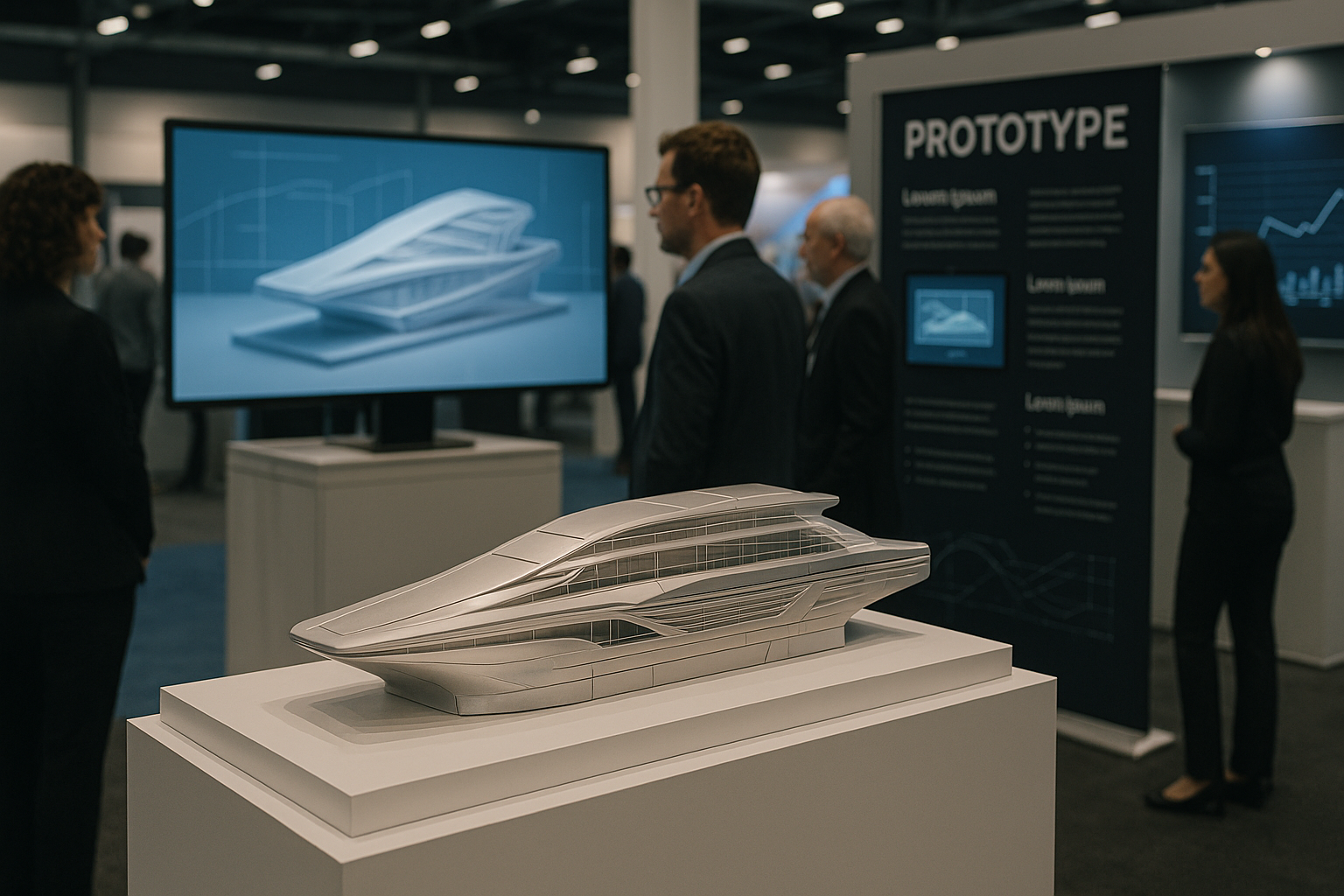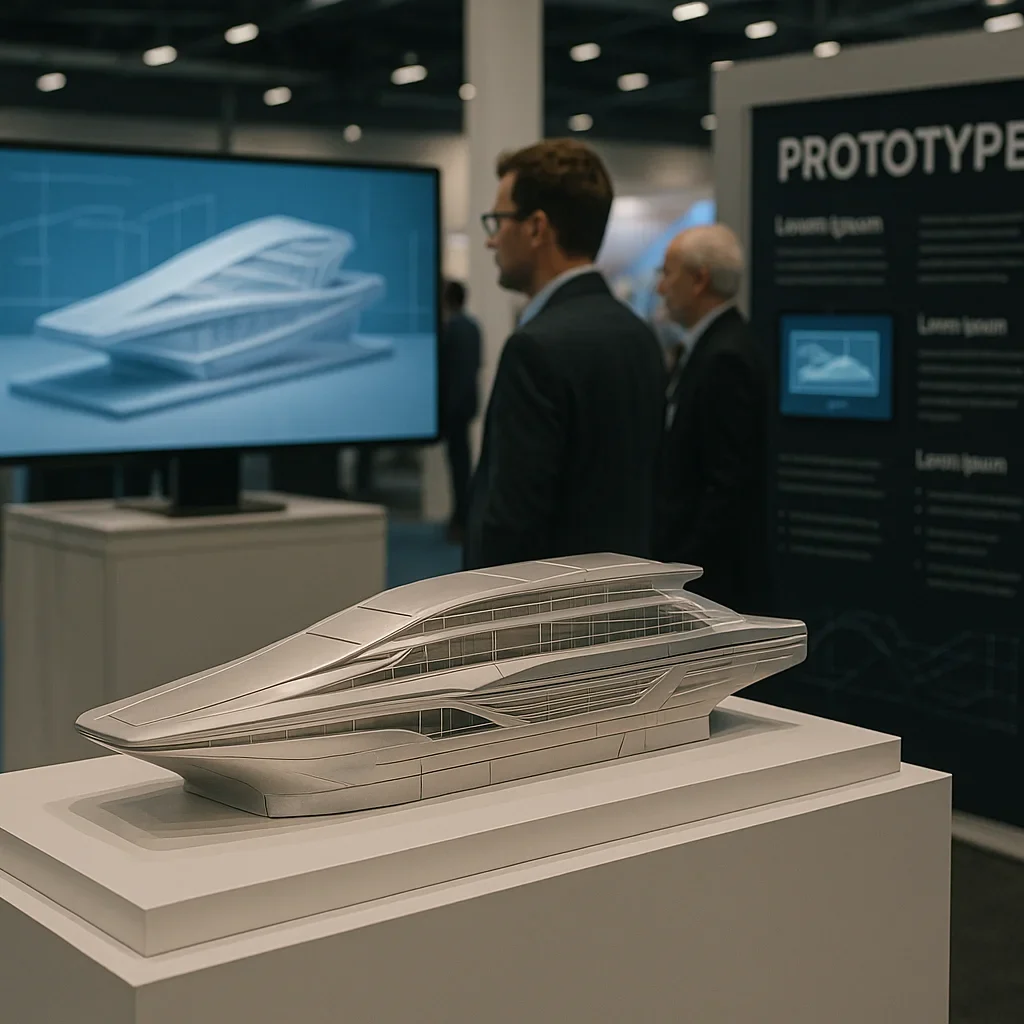

Expo Prototype Model Building
NEXAMS Leading the Way in Expo Prototype Model Building with Precision CNC Machining and Innovative Conception Design Expertise
Expo Prototype Model Building transforms ideas into striking displays for exhibitions and trade shows, and our approach stays empathetic, ethical, and human-centered from day one. At NEXAMS, we deliver intricate ship models, plane models, detailed scale models, and interactive functional prototypes through collaborative planning and clear decision-making with nearby Vendors and local Suppliers, while one accountable Supplier and seasoned Manufacturers ensure always-on Support for local teams and nearby venues.
Our work begins with a collaborative conception design phase that converts sketches into realistic models. Using advanced CNC machining, rapid prototyping, and precise fabrication, we maintain clarity around risks, timelines, and budgets. Decisions are reviewed with Vendors, the lead Supplier, aligned Suppliers, and audited Manufacturers so Support remains accessible for local technicians and nearby showcases.
As a dedicated model maker, we scaffold choices with transparent criteria, balancing aesthetics, function, and durability. We coordinate engineering reviews and pilot builds so feedback arrives early, changes are safer, and outcomes feel purpose-built. Throughout each stage, synchronized Suppliers and disciplined Manufacturers keep momentum steady, while practical Support helps local crews and nearby event staff prepare for launch.
Benefits of NEXAMS Expo Prototype Model Building Services
We offer a full spectrum of services that pair precision with presentation value—so each scale model or functional prototype looks right and works right. Our CNC-driven accuracy enables complex geometries and repeatable fits that decision-makers trust. Reviews are structured, timelines are visible, and issues are triaged promptly with input flowing through Vendors and a single accountable Supplier, while aligned Suppliers extend capacity and on-demand Support.
Our conception design pathway clarifies intent and reduces ambiguity, enabling faster iteration without compromising integrity. We prioritize traceability, safety, and responsible materials, then validate finishes against real lighting and venue conditions. This rigor is reinforced through field-readiness checks that include training, pack-out planning, and on-site rehearsal for local crews at nearby halls.
End-to-end delivery means fewer handoffs and fewer surprises. We streamline transitions from prototype design to final model making, standardize fixtures, and pre-label spares for quick swaps. Coordinated readiness reviews bring together Vendors and the primary Supplier, while synchronized Suppliers align lead times; disciplined Manufacturers finalize builds; and responsive Support closes gaps for local rehearsals and nearby deployments.
Industrial Applications and Use Cases
Marine Industry: High-precision ship models for exhibitions and trade shows, with staging plans validated early so setups feel calm and predictable—engagements are coordinated with trusted workflows among Vendors, experienced Manufacturers, and trained crews serving a local audience.
Aerospace Sector: Detailed plane models and functional prototypes that communicate aerodynamic concepts with clarity—review gates are formalized, and rehearsal kits are packaged for quick turnarounds at nearby halls, with structured checklists and hands-on Support.
Architecture: Scaled urban layouts and signature building miniatures that highlight material interplay and illumination studies—design intent is protected through consistent documentation and carefully labeled crates for local installation without stress.
Product Launches: Interactive mock-ups and demonstration rigs that help audiences understand features at a glance—assembly sequences are simplified, transport risks are reduced, and readiness drills help crews practice safe, repeatable moves for nearby stages.
Automotive Industry: Concept vehicles and subsystem cutaways that frame technology stories—teams receive clear runbooks, lighting notes, and hazard markers for tight schedules where access windows are short and staging must be exact.
Art Installations: Custom display pieces with premium finishes and subtle motion—curation notes, finish samples, and conservation guidance travel with the piece so caretakers can maintain presentation quality under varied venue conditions.
Engineering Firms: Functional prototypes for feasibility reviews and stakeholder alignment—measurement references and tolerance callouts are embedded so decisions can be made quickly and confidently at formal reviews.
Materials and Technologies Used in Expo Prototype Model Building
High-Density Foam: Ideal for conceptual studies and quick volume exploration; it cuts cleanly, paints well, and supports early feedback sessions coordinated with local crews and one dedicated Supplier.
Acrylic and Plastics: Excellent for windows, light pipes, and transparent housings; abrasion-resistant options and diffusers are staged for trials at nearby floors, with procurement routed through a qualified Supplier to maintain consistency.
Metals: CNC-fabricated brackets, frames, and precision inserts provide stability and serviceability; critical subassemblies are tracked against drawings reviewed with Vendors to lock fit and finish.
3D Printing Resins: Intricate geometries, quick jigs, and show-grade details benefit from rapid iteration; test coupons travel with kits for nearby trials, while a technical Supplier documents resin handling and cure profiles.
Wood and Veneers: Warm, architectural finishes for kiosks and large baseplates; moisture control and edge protection are planned with the same Supplier to ensure uniform texture and tone across batches.
Casting & Coatings: When durability and uniform sheen matter, cast parts and high-gloss finishes maintain realism; color standards, polishing steps, and masking diagrams ship with each kit to preserve presentation quality.
Laser Cutting & Surface Prep: Crisp edges, tight joints, and reliable tabs keep assemblies square; deburring, priming, and labeling are documented so crews can install confidently without guesswork.
How Costing Works in Expo Prototype Model Building
Investment levels depend on complexity, footprint, finish class, transport method, and rehearsal needs. We price transparently, separating design, fabrication, pack-out, and on-site services so priorities stay visible and trade-offs are easier to discuss. Options are laddered—from lean pilot rigs to premium showpieces—so teams can decide with confidence.
Schedules are structured around venue deadlines and freight realities: we model crate counts, buffer days, and route constraints to avoid rush charges and fatigue. Line-item clarity supports faster approvals, while change requests are logged with effect on dates and scope so decisions feel fair and timely.
To reduce surprises, we run fit checks, light tests, and handling drills before ship-date, then adjust hardware, foam, or rigging plans accordingly. This preparation helps arrive with fewer unknowns, smoother builds, and a calmer show crew.
Alternative Technical Innovations in Expo Prototype Model Building
Hybrid Fabrication: Blending CNC, additive, and hand-finishing to balance strength and realism while controlling mass and cost.
Interactive Prototypes: Embedded electronics with safe wiring paths, quick-swap modules, and annotated harness maps for fast troubleshooting on the floor.
Modular Assemblies: Detachable panels and keyed joints reduce crate size and accelerate installation while protecting edges and gloss surfaces.
Virtual Mock-Ups: Digital reviews for reach, sightlines, and cable routing—issues are resolved before the first cut, reducing waste and rework.
Custom Display Stands: Optimized for weight, center of gravity, and crowd flow; leveling feet and discreet fasteners protect the aesthetic while keeping setups safe.
Advanced Coatings: Uniform gloss, controlled texture, and fingerprint resistance help models stay pristine under strong lights.
Flexible Mechanisms: Hinges, slides, and magnetic latches provide tactile demos without stressing parts.
FAQs
What is Expo Prototype Model Building?
It’s the creation of physical scale models and functional prototypes for exhibitions and trade shows, focused on clear storytelling, safety, and reliable presentation under real venue constraints.
How does NEXAMS manage quality?
We use drawing control, checklists, tolerance callouts, and acceptance criteria; every station logs results so feedback flows quickly.
What technologies are typically involved?
CNC machining, additive manufacturing, laser cutting, careful hand-finishing, and show-grade coatings—combined to achieve both accuracy and presence.
How do you handle tight deadlines?
We ladder options, lock critical paths, pre-stage kits, and rehearse installs so crews arrive confident and ready.
Can you support interactive demos?
Yes—safe power integration, cable management, and quick-swap modules are planned up front with labeled diagrams and spares.
How do you ensure safe transport?
Crate design, foam selection, and tie-down strategy are engineered for route vibration, corner drops, and venue handling rules.
What about on-site adjustments?
We provide trim kits, touch-up finishes, and documented reassembly steps so minor changes are swift and controlled.
How are finishes validated?
We run light booth checks, sheen comparisons, and abrasion tests, then provide care guidance for venue staff.
Do you provide documentation?
Yes—assembly guides, rigging notes, and maintenance tips are included so teams can reference the right step at the right time.
What makes your approach empathetic and ethical?
We prioritize safety, clarity, and fair choices, and we communicate trade-offs openly so decisions remain human-centered and respectful of constraints.
A: By Sea: Asia: 15–20 days, Europe: 25–35 days, North America: 30–40 days, South America: 35–45 days, Middle East: 14–18 days, Africa: 20–28 days, Oceania: 22–30 days
By Air: Asia: 1–3 days, Europe: 3–5 days, North America: 4–6 days, South America: 5–7 days, Middle East: 1–2 days, Africa: 3–5 days, Oceania: 4–6 days
